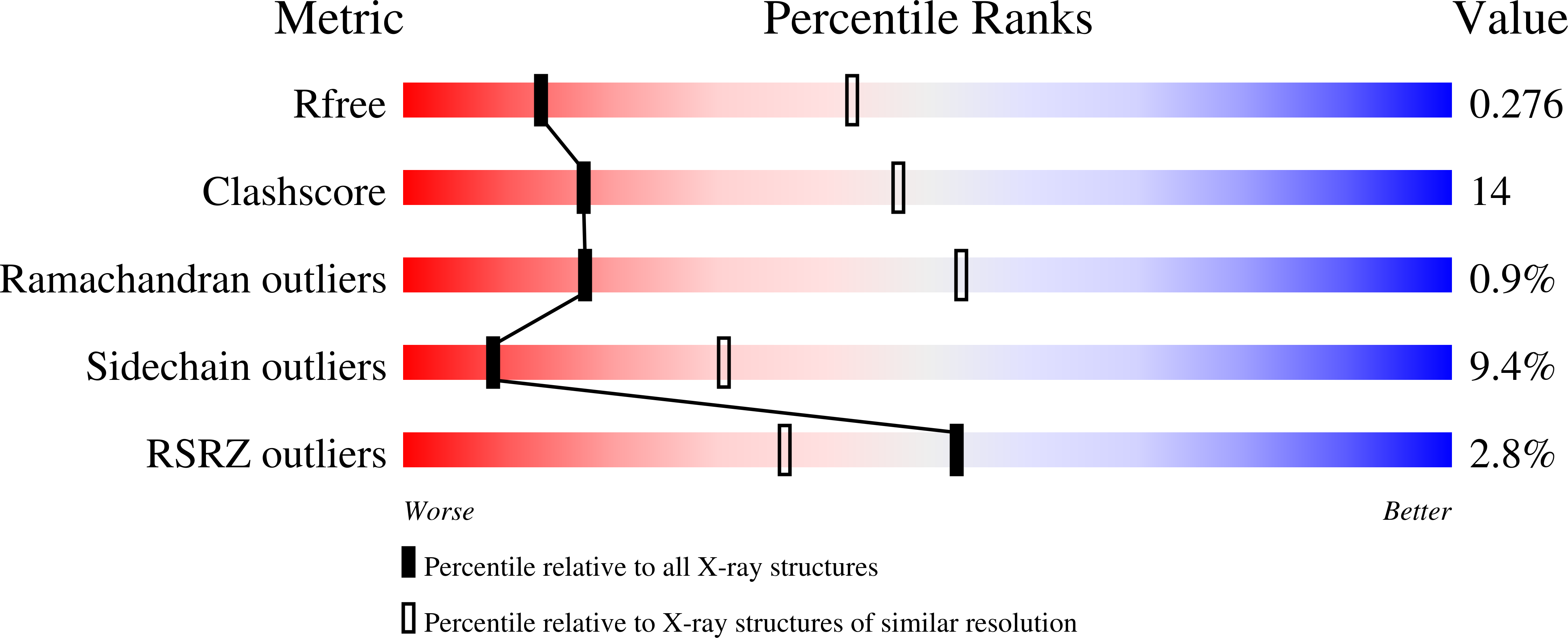An ABA-mimicking ligand that reduces water loss and promotes drought resistance in plants.
Cao, M., Liu, X., Zhang, Y., Xue, X., Zhou, X.E., Melcher, K., Gao, P., Wang, F., Zeng, L., Zhao, Y., Zhao, Y., Deng, P., Zhong, D., Zhu, J.K., Xu, H.E., Xu, Y.(2013) Cell Res 23: 1043-1054
- PubMed: 23835477
- DOI: https://doi.org/10.1038/cr.2013.95
- Primary Citation of Related Structures:
4LG5, 4LGA, 4LGB - PubMed Abstract:
Abscisic acid (ABA) is the most important hormone for plants to resist drought and other abiotic stresses. ABA binds directly to the PYR/PYL family of ABA receptors, resulting in inhibition of type 2C phosphatases (PP2C) and activation of downstream ABA signaling. It is envisioned that intervention of ABA signaling by small molecules could help plants to overcome abiotic stresses such as drought, cold and soil salinity. However, chemical instability and rapid catabolism by plant enzymes limit the practical application of ABA itself. Here we report the identification of a small molecule ABA mimic (AM1) that acts as a potent activator of multiple members of the family of ABA receptors. In Arabidopsis, AM1 activates a gene network that is highly similar to that induced by ABA. Treatments with AM1 inhibit seed germination, prevent leaf water loss, and promote drought resistance. We solved the crystal structure of AM1 in complex with the PYL2 ABA receptor and the HAB1 PP2C, which revealed that AM1 mediates a gate-latch-lock interacting network, a structural feature that is conserved in the ABA-bound receptor/PP2C complex. Together, these results demonstrate that a single small molecule ABA mimic can activate multiple ABA receptors and protect plants from water loss and drought stress. Moreover, the AM1 complex crystal structure provides a structural basis for designing the next generation of ABA-mimicking small molecules.
Organizational Affiliation:
Shanghai Center for Plant Stress Biology, Shanghai Institutes of Biological Sciences, Chinese Academy of Sciences, 300 Fenglin Road, Shanghai 200032, China.


















